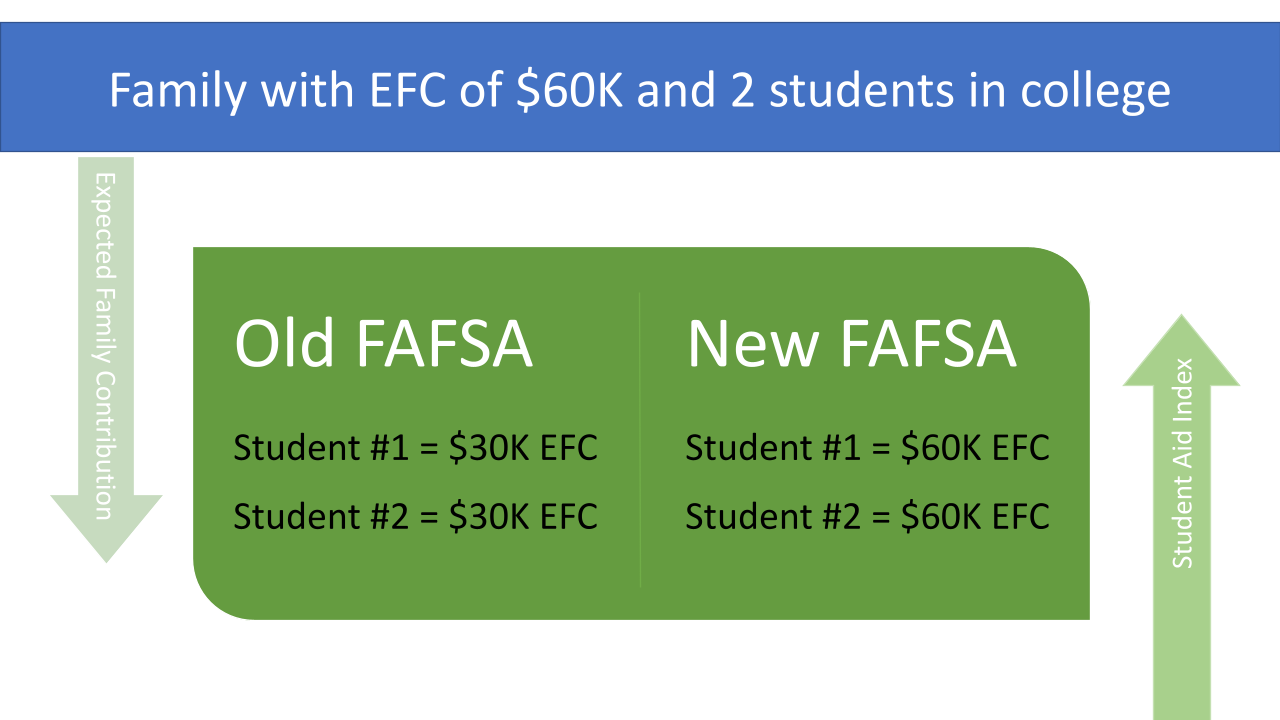FAFSA change for families with multiple students
At first glance, the recent changes to the FAFSA appear to be a good thing: A simpler form with far fewer questions, increased financial aid eligibility for low income families, and a formula change reducing any penalty for grandparents who contribute to college.
But another formula change could prove to be extremely painful to middle and upper-income families with more than one child in college at the same time, as it will reduce the amount of financial aid they will qualify for and thus increase the cost of college.
When families complete the FAFSA, they are given a number called their Expected Family Contribution (EFC) that is the starting point for individual colleges to then calculate how much need-based financial aid they will offer.

In the current formula, a family gets to divide their EFC by how many students they will have in college at the same time, in essence, allowing them to qualify for more financial aid.
However with the new FAFSA, which goes into effect for the 2024-2025 school year, families no longer get to divide their EFC (renamed to Student Aid Index, or SAI) by how many students they will have in college at the same time.

Depending on the EFC, the number of students in college the same time, and, importantly, the cost of the colleges the family is applying to, this formula change could dramatically reduce the amount of need-based financial aid the family qualifies for.
Consider the example of a family with an EFC of $60,000 and two students in college applying to a university that costs $50,000 per year. With the current FAFSA, the family will qualify for $40,000 of financial need. However, under the new FAFSA, that family will not qualify for any financial need at that school, a gigantic difference for a family already trying to figure out how to pay for two kids in college at the same time.

Interestingly, this formula change was intentional as policy makers felt it was unfair for families with children closer in age to receive a benefit that other families were not receiving simply because of the spacing in age of their children.
This change, by design, does not affect low-income families to nearly the same degree, as many already have a $0 or very low EFC.
*This article was updated on June 17, 2021, to reflect the announced one year delay in implementation of the changes to the 2024-25 school year, due to the complexity of overhauling the entire system. The previous version had the changes occurring for the 2023-24 school year.
